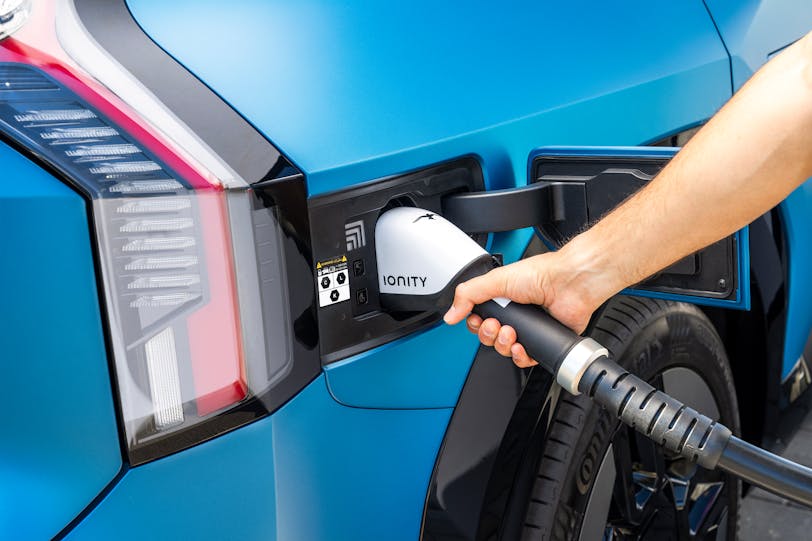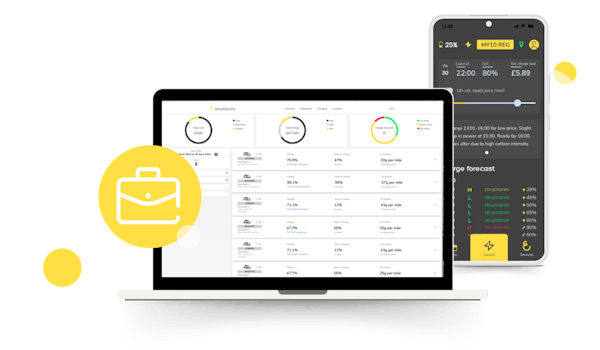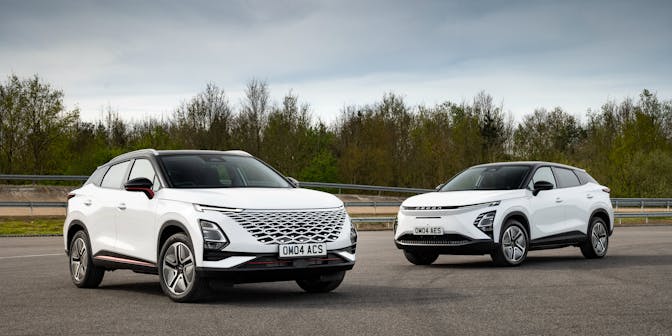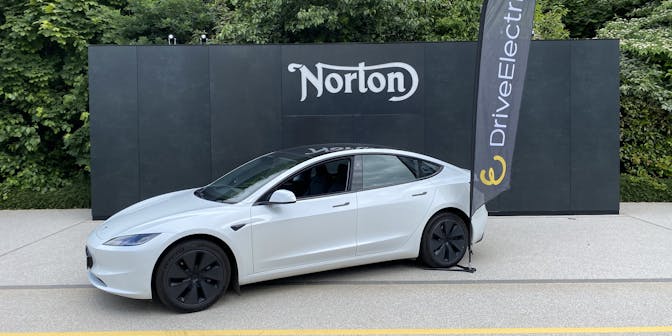Guide: Discover the facts on lowering Scope 3 GHG emissions
Let's take a closer look at Article 8 and Article 9 funds of the European Sustainable Finance Disclosure Regulation and how these can reduce Scope 3 emissions in your organisation
Looking to secure investment in your business? In today’s increasingly competitive market, reducing your Scope 3 emissions is a key contender for driving growth. Read ahead to learn everything you need to know about the ways EVs can help.
When it comes to tackling climate change, there are some things businesses can control. Take fuel consumption and workplace energy usage for example.
But what about when greenhouse gas (GHG) emissions are out of your hands? Understandably, this can feel like an unfair disadvantage for smaller organisations.
Studies have shown that commercial activity is accountable for 18% of the UK’s carbon emissions. And while most larger corporations have paced ahead with their ESG strategy, many SMEs are struggling to keep up. Almost half said they’re unsure about how to prepare for Net Zero.

We know it’s easy to feel overwhelmed with the task at hand. But there are many ways you can get on the road to Net Zero, fast.
Here at DriveElectric we're helping lots of SMEs and larger businesses on their individual journeys to Net Zero - whether that's transitioning ICE-powered fleet vehicles to electric, offering eligible team members access to EVs via EV Salary Sacrifice scheme, or giving businesses the tools to benchmark, manage and lower the carbon emissions from their vehicles.
What’s more, it can help you to reduce your Scope 1, Scope 2 and Scope 3 GHG emissions. Read ahead for your rundown on the what, why, and how this is important for placing your business at the front seat of the sustainability revolution.
Scope 3 emissions: What does this mean?
Let's breakdown what each of the three Scopes means for your business activities
We hear the term ‘carbon footprint’ a lot in today’s eco-conscious world - and rightly so. This refers to the amount of carbon dioxide (CO2) your business’s activities releases into the atmosphere.
Scope 1
Direct emissions that come from your business, including fuel combustion in ICE fleet vehicles and chemical production.
Scope 2
Indirect emissions from the consumption of purchased energy from sources not owned by you. Think electricity, heating, and air con. This includes the emissions used to generate the energy used in your business fleet's electric vehicles.
Scope 3
This covers the rest of the indirect emissions from your company’s value chain. This includes business travel, commuting, waste, purchased goods, and assets - as well as how your customers use your services or products. This includes the emissions generated by energy used in vehicles that are considered part of your value chain but not your direct fleet vehicles.
Companies that successfully report on their reduced Scope 3 emissions can drive impactful business growth, all while working to fight climate change.
It’s known as the most challenging set of emissions to address but is a vital step to reduce overall emissions generated directly and indirectly by your business. This is where DriveElectric can help, we can do this by:
- Benchmarking, reporting and then optimising the energy and carbon emissions used by electric vehicles through our DriveElectric Plus solution
- Providing your eligible team members with access to electric cars through an EV salary sacrifice scheme
Why is it important to measure and reduce Scope 3 emissions?
Of course, reducing all your GHG emissions to a minimum is crucial in today’s climate crisis. But Scope 3 emissions in particular come with many benefits to accelerate business growth. That’s because for many organisations, a majority of their carbon footprint comes from their supply chain.
Fortunately, there are ways around it - and electric vehicles are one of the accessible solutions for decarbonising your business strategy.
Benefits of measuring your Scope 3 emissions include:
-
Ability to pinpoint any areas in your value chain, so you can refine your reduction plan accordingly.
-
Understand which suppliers are supporting the sustainability movement (and which are falling behind).
-
Make informed decisions on delivering carbon reductions across your entire organisation.
-
Become inspired to develop more sustainable products and service offerings.
-
Benchmark your carbon emissions and make positive steps to reduce these emissions, through our DriveElectric Plus solution
A rundown of Article 8 and Article 9 Funds
Ever heard of the European Sustainable Finance Disclosure Regulation (SFDR)? This was created to ‘improve transparency, reduce greenwashing, and direct capital towards more sustainable investments, products and businesses.’ The goal is to provide a more measurable approach for understanding sustainability within the financial landscape.
That’s why ESG reporting is important for businesses: it gives you a much stronger case for investment. Read our full guide for more.
The SFDR categorises funds based on their ESG focus, with Article 8 and Article 9 playing a crucial role in helping businesses reduce their Scope 3 GHG emissions.

Here’s a quick breakdown of what they mean:
Article 8 is a fund that promotes ‘environmental or social characteristics’, provided that the companies in which the investments are made follow good governance practices (that means meeting the ESG framework).
Article 9 is a fund that has sustainable investment as its objective. This basically refers to investments in economic activities that contribute to an environmental or social objective, or investments in human capital/socially disadvantaged communities.
Which is why focusing on ESG targets is critical for the long term health of your organisation, and with tools such as DriveElectric Plus helping to benchmark, monitor and reduce emissions from electric vehicles, this can help to unlock future investment. Furthermore, incorporating an EV salary sacrifice scheme for your team members further helps to combat Scope 3 emissions.
How to measure your carbon footprint
It’s every business’ responsibility to measure their carbon footprint. To get a truly accurate reflection, it’s advised to wait at least one year before calculating your carbon emissions.
Start by collecting data from your employees about their general energy usage, as this will help you understand the root of your carbon emissions. Then, you can take a deeper look into the energy output of your company.
Factors to consider include:
- The energy your workers use to get to work
- Utilities at the workplace
- How much you waste and recycle
Of course, a key part of this will involve calculating your Scope 3 emissions from employee commuting.
The below methods are your best bet:
Fuel-based method: Figure out the amount of fuel consumed on the daily commute and then add the right emission factor.
Distance-based method: Collect data from your employees on their commuting pattern (like the typical distance they travel) and again apply the emission factors for the mode of transport they used.
Average-data method: Estimate emissions from employee commuting based on the UK average data on commuting patterns.
Wondering what the ‘emission factor’ is? Don’t worry, there are plenty of online calculators that can work this out for you. Try this one here.

Benchmark and reduce emissions with DriveElectric Plus
Our advanced digital tools include DriveElectric Plus which allows you to benchmark and optimise carbon emissions for electric vehicles.
Your drivers use our app to plan and manage EV journeys and you get access to straight forward aggregate information on your fleet activities. Our AI-powered charging technology hunts out the lowest carbon and lowest-priced electricity to ensure your vehicles stay on the road.
More EV guides
Used Electric Car Business Leasing
Business Contract Hire

Fleet Management

Norton Motorcycles launches EV salary sacrifice scheme through DriveElectric
